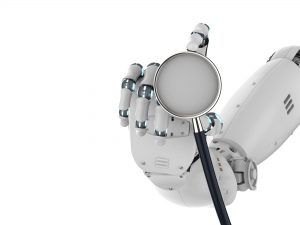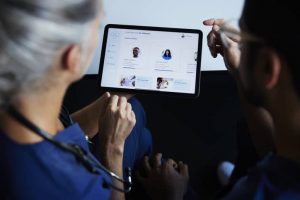Informatics — defined by Merriam-Webster as “the collection, classification, storage, retrieval, and dissemination of recorded knowledge” — has had an enormous impact on healthcare.
Health informatics – the combination of healthcare, information technology and communications – continues to transform healthcare in many areas including costs, the sharing of medical data, patient participation, greater coordination between providers, and improved patient outcomes.
These rapid changes have led to informatics being adopted for individual branches of healthcare, to streamline the processes and improve the outcomes for which these divisions are directly responsible.
Among the health-related informatics divisions are:
- Pharmacy informatics deals with the acquisition, storage, analysis, use and dissemination of medication-related data with the aim of significantly improving patient care and health outcomes.
- Nursing informatics brings together nursing science, multiple information management and analytical sciences to identify, define, manage, and communicate data, information, knowledge, and wisdom in nursing practice.
- Biomedical informatics involves looking for the best uses of biomedical data to aid scientific inquiry, problem solving and decision making, according to the American Medical Informatics Association, an organization that supports the development and application of medical informatics for patient care, teaching, research and health administration.
In their textbook, “Biomedical Informatics: Computer Applications in Health Care and Biomedicine,” authors Edward H. Shortliffe and Marsden S. Blois define biomedical informatics as four subfields:
- Bioinformatics, which collects and analyzes complex biological data such as genetic codes.
- Clinical informatics, which studies information technology to find new ways to apply it to healthcare, including specific ways data must be structured to be used in reports and evaluations.
- Imaging informatics, which focuses on tissues and organs, concerned with acquiring images, converting them to digital form, and then analyzing, manipulating and using those images.
- Public health informatics, which applies information, computer science and technology to public health practice, research, and learning.
The four subfields “are where the informatics applications are geared toward a specific area,” according to a lecture, “What Is Health Informatics?” on the Health Informatics Forum website.
For example, clinical informatics focuses on the individual patient while public health informatics focuses on society and the population as a whole. Tissues and organs are the domain of imaging informatics, while bioinformatics deals with the processes of cells and molecules.
All of these areas draw on computer science, clinical science, basic biomedical science, cognitive science, bio-engineering, management science, and epidemiology and statistics.
Driving the development and implementation of all these fields is the American Recovery and Reinvestment Act (ARRA) and, more specifically, a provision of ARRA known as HITECH, for Health Information Technology for Economic and Clinical Health. HITECH covers health information communication and technology provisions.
HITECH also provides funds to help providers and states adopt and utilize health IT with the aim of achieving widespread adoption of health IT and enabling electronic exchange of health information.
Also driving the adoption of the various fields of health informatics are a focus on eHealth, the adoption of electronic medical records (EMR) and electronic health records (EHR), and the growing demand from both patients and providers for access to and the ability to exchange health information electronically.
The different forms of informatics utilized in healthcare can be thought of in the same way as the various occupations in the medical field: physicians, clinicians, nurses, pharmacists and records-keepers all have different tasks but, like the different fields of informatics, are devoted to improvements in patient outcomes achieved through their specific set of training and skills.




